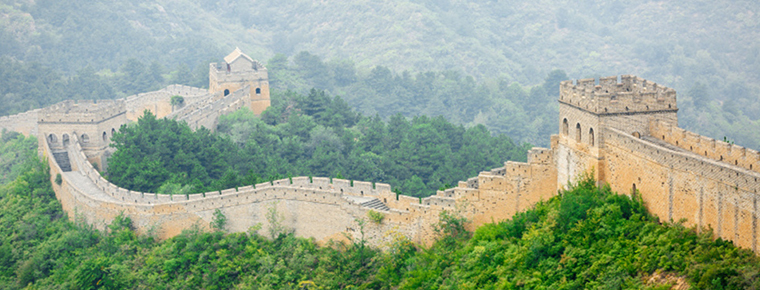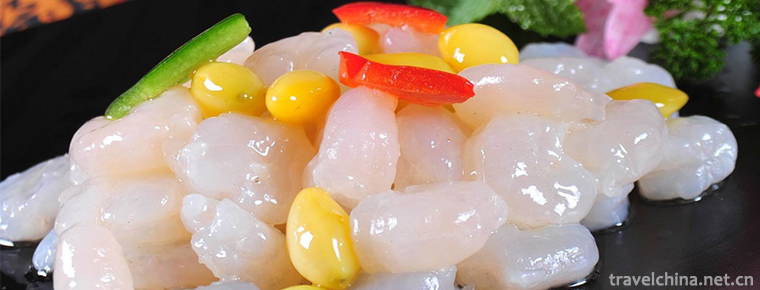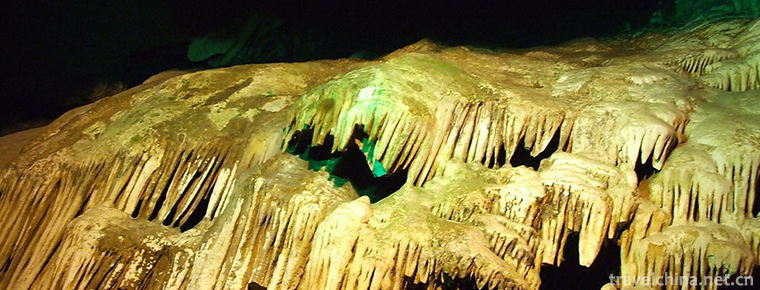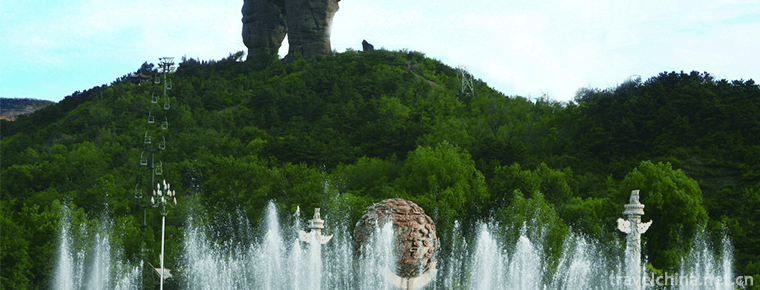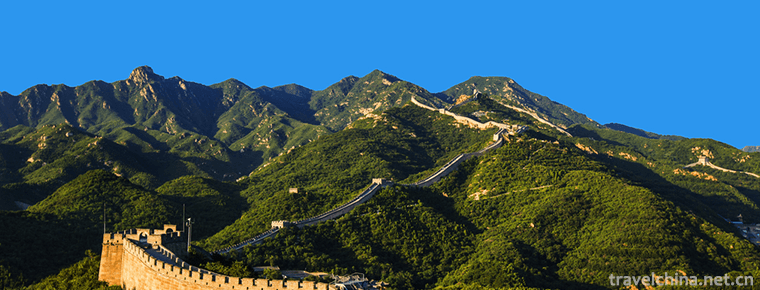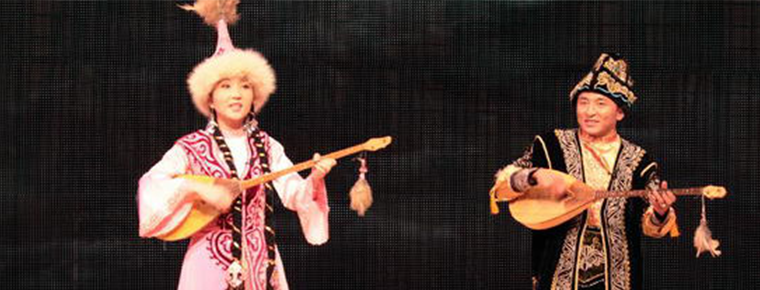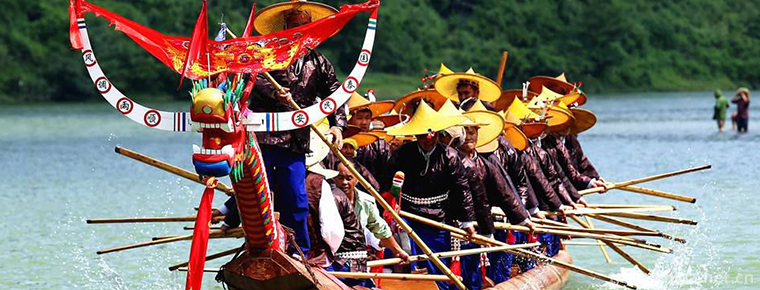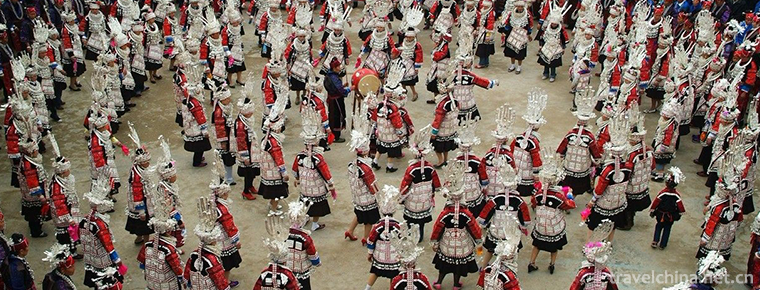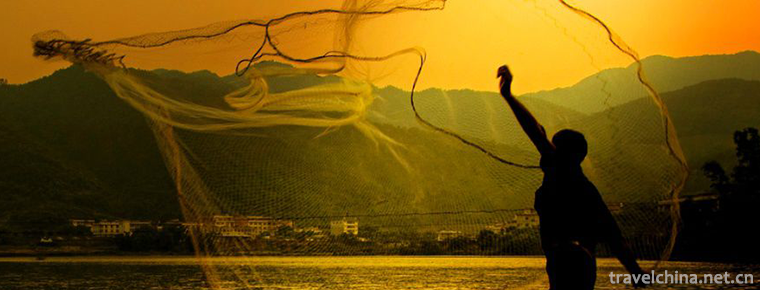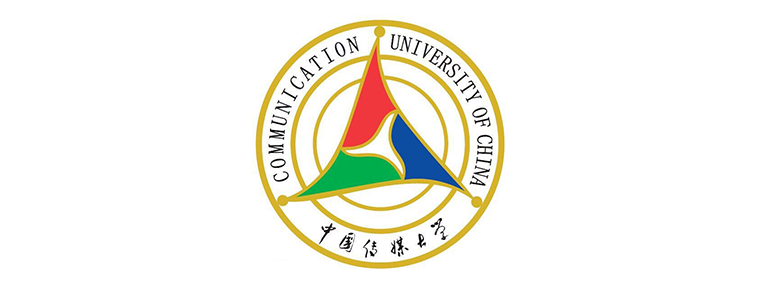Pumi rubbing
Pumi rubbing
Pumi nationality rubbing "rubbing consultation" is Pumi language, "rubbing" means dancing, "rubbing" means dancing, that is, dancing. When dancing, the leader strikes the sheepskin according to a certain rhythm, playing the effect of drumming, so it is also called "sheepskin dance". In addition, there is also the name of "four-string dance" or "Pumi Guozhuang". Mainly spread in Tongdian, Hexi, Lajing, Jinding and Shideng villages where Pumi people live together.
On June 7, 2006, "Pumi rubbing" declared by Lanping Bai Autonomous County of Yunnan Province was included in the second batch of national intangible cultural heritage list.
Heritage serial number: 675 III-78.
historical origin
The origin of "rubbing" can not be traced to history. Folklore tells us that in a war, the Pumi ancestors lit bonfires at night and danced "rubbing" all night long, which made the enemy mistake them for numerous people and horses, and eventually withdrew from the enemy. According to the old artists, the traditional "rubbing" dance has 72 tunes, i.e. 72 sets of changes in dance steps, but only 12 sets of "reunion dance", "bowl chopsticks dance", "similar dance", "shoe-sole dance", "arm-to-arm dance" and "end dance" remain.
artistic characteristics
artistic form
There are twelve sets of rubbing and negotiating dances, but after a long period of circulation, dancing steps have developed everywhere, and different dancing steps are increasing day by day. Nevertheless, there are many similarities and differences in expressive techniques, and the sound type and rhythm are basically fixed. This is a description of the twelve sets of dance steps in Longtang, Tongdian and Waterfront before the 1960s. Its main characteristics are: the force of stamping is vertical (focus on the forefoot of the center of gravity), the force of striding (walking) is horizontal (force point in the crotch), forward bending when regression, reverse upper and lower body strength, backward (natural) when upward and forward, reverse upper and lower body strength (force point in the abdomen position). The representative programs of vertical relationship are "Dengbu Langla" (one foot and two feet); the representative programs of horizontal relationship are "steep worship needs Xu Zhi" (hip-to-hip dance); and the representative programs of opposite force (upper and lower body) are the first dance method of "synthesize" (reunion dance).
The speed is generally medium. When the speed is slow, the dance steps are light and sprinkled, as if the breeze is rhythmically affecting the dress. When the speed increases, the dance steps are rough and powerful.
Formation, mainly (hand in hand) single circle, double circle and half circle, generally used to jump counterclockwise, but also clockwise. If a double circle is formed, jumps in the same direction and in different directions can be made. Dancing is not limited by time, place and number. People who participate in dancing can intervene at any time, or start one after another. Some people can dance and others can sing (folk songs) as they walk. After singing, they danced.
Artistic Characteristics
The "rubbing" dance retains the characteristics of the trinity of ancient songs, dances and music. It has a variety of names, varied formations and steps, with relaxation and relaxation. It is the Pumi people's favorite dance, widely spread, mostly used in various self-entertainment, festive fitness activities, not limited by the number of participants, few dozens of people participate, more than tens of thousands of people can dance together, to express national unity and joy, has a certain artistry.
Inheritance Significance
"Rubbing" is a happy folk dance symbolizing unity, friendship, auspiciousness and happiness. It is popular with the Pumi people and the surrounding ethnic groups, and has created a high reputation in China. Its basic contents and forms are as follows: accompanied by a four-string harp, a dancer taps the wrapped sheepskin in rhythm and produces rhythmic music accompanied by the change of dance steps. The artistic creation of "Dragon Opening Door", "Dragon Out of Water", "Dragon Turning over", "Dragon Drilling Hole", "Dragon Swinging Tail", "Dragon Holding Column", "Dragon Closing Door" and "Dragon Happiness" is twisted and twisted. Type I, team type changes quickly and smoothly, vigorous and lively, momentum, a thousand miles.
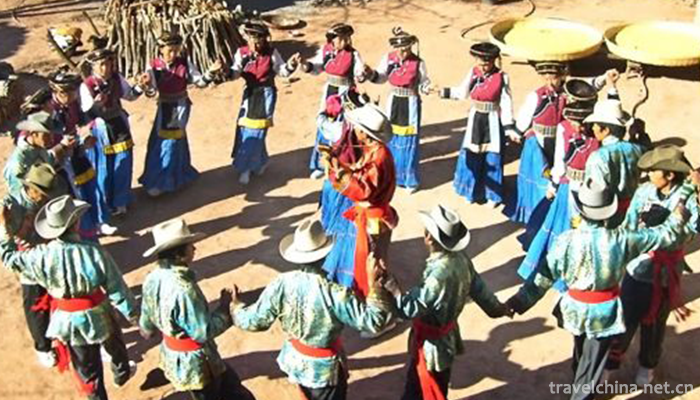
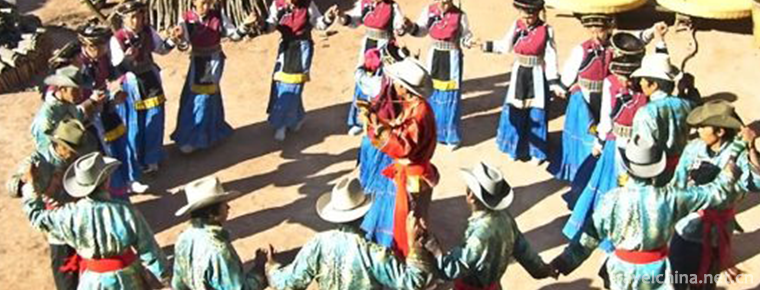
Pumi rubbing
-
Crystal River Shrimps
Crystal river shrimp is a local famous dish, which belongs to Shanghai cuisine. The size is uniform, crystal clear, elastic and brittle.
Views: 266 Time 2018-11-14 -
Laojunshan Jiguandong Tourist Area
Jiguan Cave is located in Luanchuan County, Luoyang City, Henan Province, three kilometers west of the county seat. It is located on the half-hillside of Jiguan Mountain
Views: 204 Time 2018-12-09 -
The Twin Colossals
Shuangta Mountain is located ten kilometers southwest of Chengde Summer Resort in Hebei Province, with a total area of 3000 hectares and beautiful scenery. It is the largest natural scenic resort in C
Views: 318 Time 2019-02-08 -
The Site of the Ancient Great Wall of the Warring States Period
When people mention the Great Wall, they will think of the Great Wall from Shanhaiguan to Jiayuguan. However, in Xilingol League, there are also the ancient Great Wall, which is not as famous as the G
Views: 190 Time 2019-03-09 -
bir bala
Kazakh is a music-loving nation, known as "horses and songs are the wings of Kazakhstan". Folk songs play a very important role in Kazakh music. Where there is a felt room of Kazakh people,
Views: 127 Time 2019-05-02 -
Miao Dragon Boat Festival
Every year from May 25 to May 27 of the lunar calendar, the Miao people living in Shibing and Taijiang counties of Guizhou Province along the Qingshui River hold this grand gathering. The Dragon Boat
Views: 149 Time 2019-06-05 -
Miao Sister Festival
Miao Sister Festival, also known as "Sister Rice Festival", is a traditional festival of Miao people in Laotun and Shidong areas of Taijiang County, Guizhou Province. It is held from March 1
Views: 139 Time 2019-06-05 -
Fishing Song
Fishing songs are a kind of Chinese folk songs sung by fishermen in coastal areas of China and lakes and harbours. If popular in Shanwei City, Guangdong Province, collectively known as Shanwei Fishing
Views: 185 Time 2019-07-14 -
Communication University Of China
Communication University of China ( Communication University of China Referred to as "Zhong Chuan", located in the capital city. Beijing Yes. Ministry of Education of the People's Republic o
Views: 156 Time 2019-12-03 -
Summary of Deyang
In 2018, Deyang's GDP reached 221.39 billion yuan, an increase of 9.0% over the previous year at comparable prices. The total economic output has exceeded 200 billion yuan, with per capita GDP of 62569 yuan. Among them, the added value of the primary industry
Views: 348 Time 2020-12-14 -
Yibin social security
By the end of 2019, there were 1.0302 million people participating in the basic endowment insurance for urban employees, an increase of 25500 over the end of the previous year, and 1.921 million people participated in the basic endowment insu
Views: 372 Time 2020-12-18
